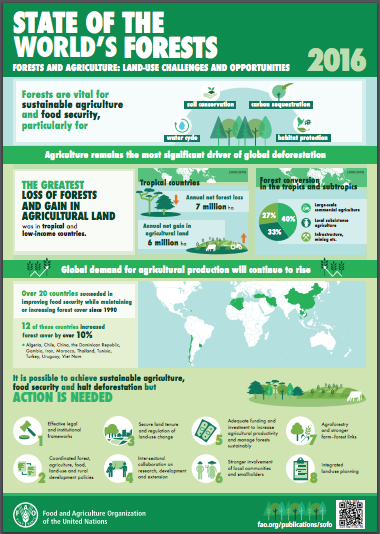Trees for the Earth
“The best time to plant a tree was 20 years ago. The second best time is now.”
Saturday is Earth Day.
47 years ago, on April 22, 1970, 20 million Americans took to the streets, parks, and auditoriums to demonstrate for a healthy, sustainable environment in massive coast-to-coast rallies. It directly led to the creation of the Environmental Protection Agency and the passage of the Clean Air, Clean Water, and Endangered Species Acts.
If you're in Madison, join me on the March for Science.
By John McConnell (flag designer) https://commons.wikimedia.org/w/index.php?curid=32330734
Trees for the Earth
Last year the focus was on reforestation. It's a continuing campaign that aims to plant 7.8 billion trees by 2020.
At the moment, agriculture is the main driving force behind deforestation. However, as noted above, over 20 countries have figured out how to increase food security while also increasing their forest cover. In fact, one of the members of the Madison Chop and Chat uses woodlands to raise their pigs.
Reforestation efforts have been undertaken by a whole host of different actors. South Korea has used a reforestation programme to help improve relations with North Korea. In the Appalachian region of the United States coal mining did tremendous damage. The ARRI has planted millions of trees in the region, repairing the damage, bringing back wildlife and creating sustainable forestry jobs. The two fellows, Jia Haixia and Jia Wenqi, planted 10,000 trees in 10 years. An average of three trees a day might not sound like a lot, but Haixia is blind, and Wenqi has no arms.
Woodland on Hallasan, Jeju Island, South Korea.
Maintaining adequate forest cover is extremely important. Forests and trees support sustainable agriculture. They stabilise soils and climate, regulate water flows, give shade and shelter, and provide a habitat for pollinators and the natural predators of agricultural pests.
Forest cover on the Blue Mountains outside Sydney, Australia.
Trees are really good at absorbing carbon-dioxide. Carbon-dioxide is a major greenhouse gas, one of the main contributors to climate change. If we increase the amount of forests we have, we'll have a better chance of absorbing some of the CO2 we're emitting through burning fossil fuels.
Researchers from Stanford University found evidence that suggests the Little Ice Age (c.1500 to 1750) was caused by the rapid decline in native human populations in the Americas due to diseases brought over by European explorers. This shows that a concerted effort to increase the number of trees today will help combat climate change.
To help us all plant more trees I'll be including a free packet of birch seeds with all shop orders made through to the end of May.



